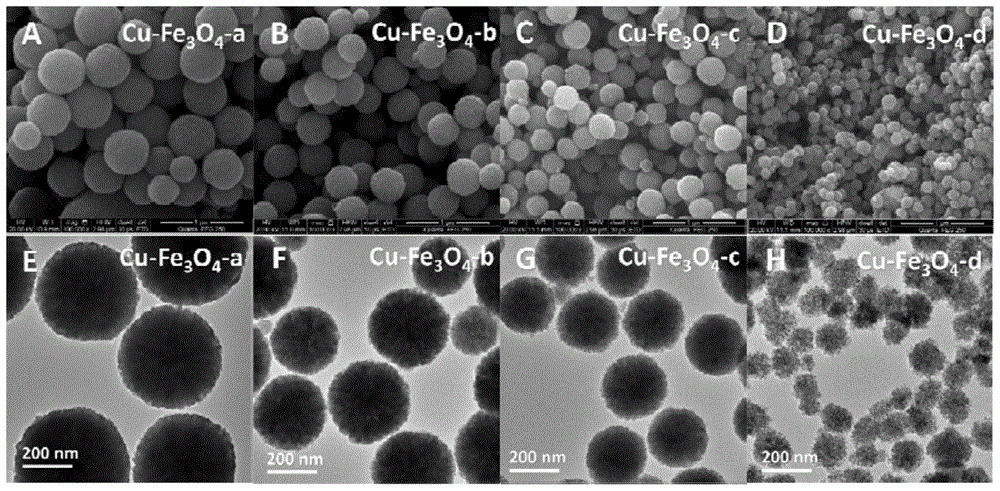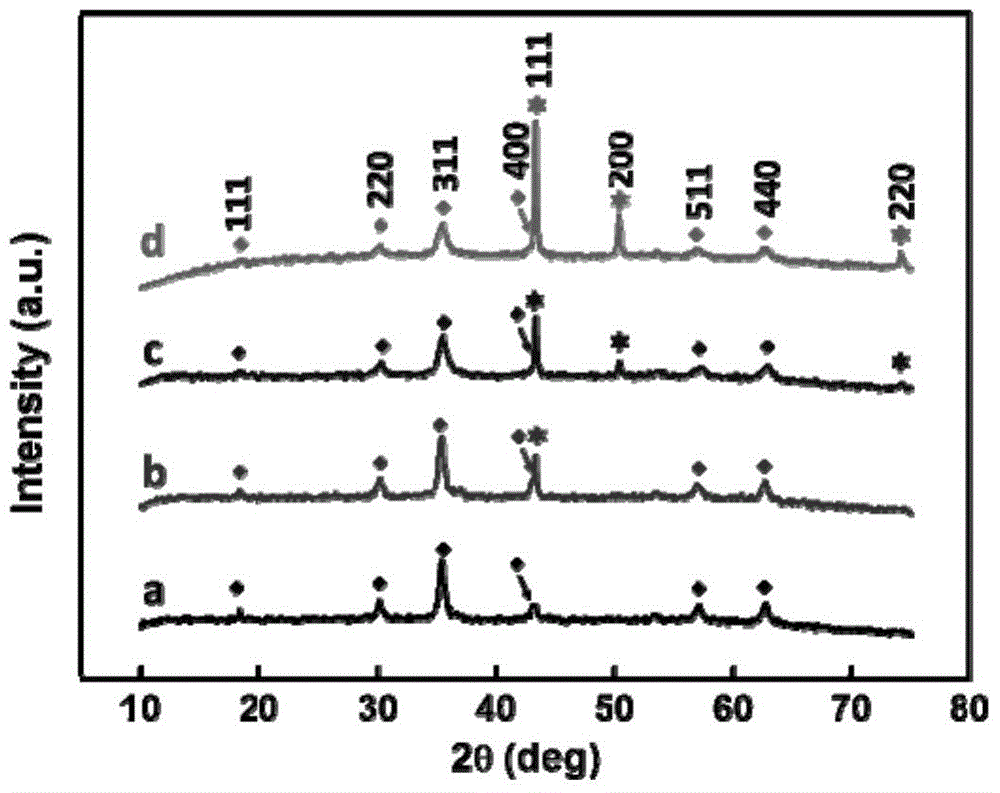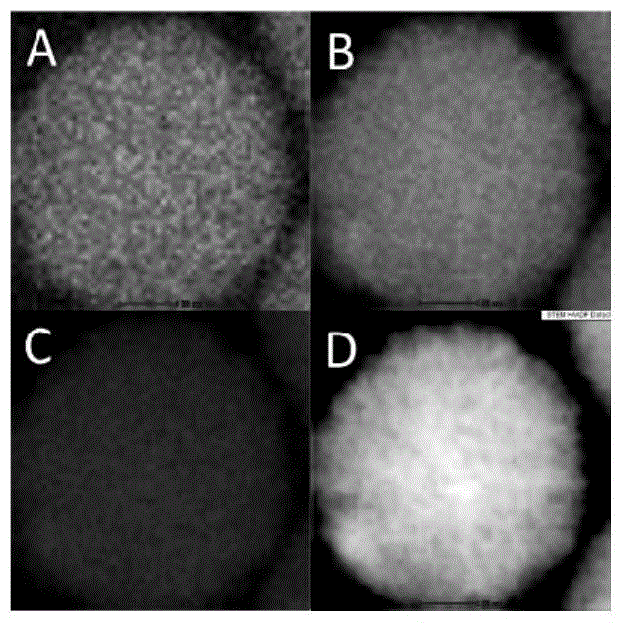A kind of copper-doped composite magnetic nanomaterial and its preparation and application
A magnetic composite nano-copper doping technology, which is applied in the fields of alkali metal compounds, other chemical processes, chemical instruments and methods, etc., can solve the problems of the stability of magnetic nano-composite materials to be evaluated, the destruction of magnetic particle structure, and the complexity of the preparation process. , to achieve the effects of increasing the specific surface area of the product, enhancing the affinity, and simplifying the preparation process
- Summary
- Abstract
- Description
- Claims
- Application Information
AI Technical Summary
Problems solved by technology
Method used
Image
Examples
Embodiment 1
[0033] Embodiment 1: Synthetic magnetic Cu-Fe 3 o 4 .
[0034] 0.0085 g CuCl 2 2H 2 O with 1.35 g FeCl 3 ·6H 2 O Add 36 mL of ethylene glycol, ultrasonically disperse evenly (the initial molar ratio of copper ions to iron ions is 1:100), then add 3.6 g of NaAc, stir vigorously for 0.5 h, then put it into a hydrothermal reactor at 200°C for 8 h; Magnetic separation, washing with water and absolute ethanol three times each, and vacuum drying at 60 °C for 12 h to obtain mesoporous Cu-Fe 3 o 4 Microsphere a, and carry out SEM / TEM morphology characterization to the product, see figure 1 (A / E), the obtained product particle size is 440 nm, specific surface area is 49.44 m 2 g -1 , the total pore volume is 5.24cm 3 g -1 nm -1 , the zeta potential is 6.22 mV, and the magnetism is 106.4 emug -1 .
Embodiment 2
[0035] Embodiment 2: Synthetic magnetic Cu-Fe 3 o 4 .
[0036] 0.0425 g CuCl 2 2H 2 O with 1.35 g FeCl 3 ·6H 2 O was added with 36 mL of ethylene glycol, ultrasonically dispersed evenly (the initial molar ratio of copper ions to iron ions was 1:20), and then 3.6 g of NaAc was added, stirred vigorously for 0.5 h, and then placed in a hydrothermal reactor for 8 h at 200 °C; Separated, washed with water and ethanol three times each, and dried in vacuum at 60 °C for 12 h to obtain mesoporous Cu-Fe 3 o 4 microsphere b, and carry out SEM / TEM morphology characterization of the product, see figure 1 (B / F), the resulting product particle size: 560 nm, specific surface area: 49.44 m 2 g -1 , the total pore volume is 5.24cm 3 g -1 nm -1 , the zeta potential is 11.2 mV, and the magnetism is 102.56 emu g -1 .
Embodiment 3
[0037] Embodiment 3: Synthetic magnetic Cu-Fe 3 o 4 .
[0038] 0.170 g CuCl 2 2H 2 O with 1.35 g FeCl 3 ·6H 2 O was added to 36 mL of ethylene glycol (the initial molar ratio of copper ions to iron ions was 1:5), ultrasonically dispersed, and then 3.6 g of NaAc was added, stirred vigorously for 0.5 h, and then placed in a hydrothermal reactor for 8 h at 200 °C; Separated, washed with water and ethanol three times each, and dried in vacuum at 60 °C for 12 h to obtain mesoporous Cu-Fe 3 o 4 microsphere c, and carry out SEM / TEM morphology characterization of the product, see figure 1 (C / G), the obtained product particle size: 240 nm, specific surface area: 88.06 m 2 g -1 , the total pore volume is 11.24cm 3 g -1 nm -1 , with a magnetic zeta potential of 12.4 mV and a magnetic value of 87.45 emu g -1 .
PUM
| Property | Measurement | Unit |
|---|---|---|
| size | aaaaa | aaaaa |
| pore volume | aaaaa | aaaaa |
| size | aaaaa | aaaaa |
Abstract
Description
Claims
Application Information
 Login to View More
Login to View More - R&D
- Intellectual Property
- Life Sciences
- Materials
- Tech Scout
- Unparalleled Data Quality
- Higher Quality Content
- 60% Fewer Hallucinations
Browse by: Latest US Patents, China's latest patents, Technical Efficacy Thesaurus, Application Domain, Technology Topic, Popular Technical Reports.
© 2025 PatSnap. All rights reserved.Legal|Privacy policy|Modern Slavery Act Transparency Statement|Sitemap|About US| Contact US: help@patsnap.com



